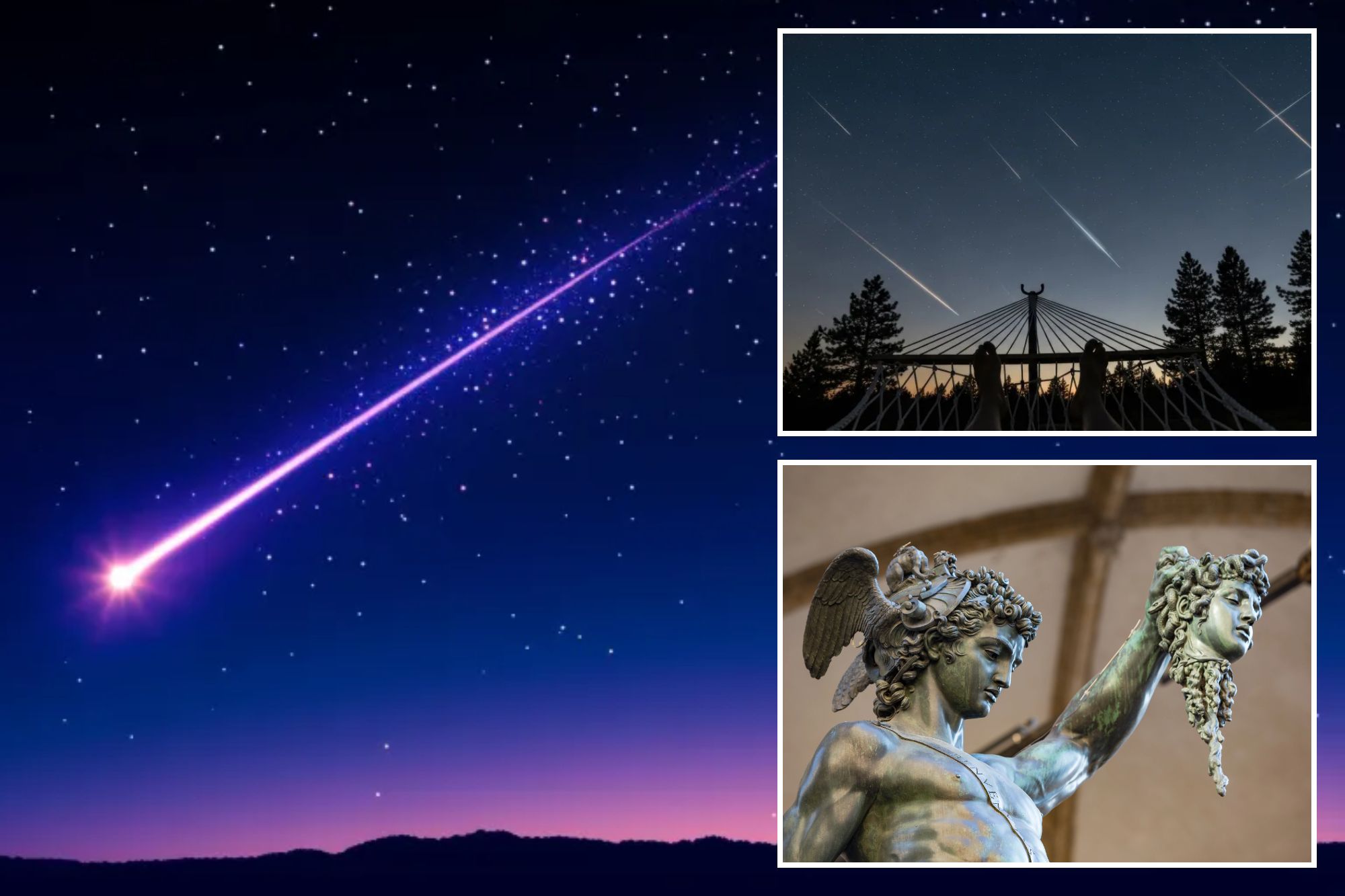
Find the darkness and accumulate your desires, my babies – the annual Mateor Perseid Shower is over us.
Among the best manifestations of the sky in our solar system, Perseids will be visible throughout the JSC and most of the northern hemisphere in the coming days.
Here’s all you need to know.
Persid meteor shower 2025
The Persian meteor shower is visible from Thursday, July 17, until the end of August.
The start of showers this week coincides with a phase of the last quarter moon, which means that the sky will be dark enough to really fill the fire of some early meteors.
In North America, eyesight can begin at 10:00 am and last during the pre-aging hours.
Perseids are expected to reach their zenith or peak on the evening of August 12, continuing shortly before dawn on August 13.
However, and unfortunately, due to the elevation and brightness of the full moon of Sturgeon in August 9, the shower peak will not coincide with peak viewing conditions, as only the brightest shooting stars will be visible.
Meteor shower July 2025
Due to the moon being a real boner killer and light pollutant during Peak Perseid, the best time to watch the show will be in the early days of showers, from July 18-28.
The darkest phase of the moon, the New Moon, arrives on July 24 – providing the main canvas for the celestial show.
From then on, the moon will slowly be thrown into a crescent. The sky will be high to the 28th, when the moon glow will build and begin to compete with the shine of the stars.
When is the Perseid Meteor Shower?
The best time to observe Perseids is between 2 and 4 in the morning during this main time, up to 100 meteors per hour will appear to scratch the surface of the sky.
Excellent geeks in NASA have previously stated that fire fires, or large, bright meteors, are the Perseids cosmic call card.
What is a meteor?
Meteors arise from comet particles and asteroid waste. When this glorious detrit travels around the Sun, it leaves a path behind.
When the earth passes through these paths, the pieces of dust of space collide with our atmosphere and burn themselves, and their disintegration creates color and fire in the sky.
Meteor Perseid shower comes from previously known comets as Swift-Tuttle, officially assigned 109p/Swift-Tuttle. Yeardo year, our planet crosses the orbital route of the comet and moves through a trail of waste, with pieces and pieces of comet that collide spectacularly in the upper atmosphere of the Earth.
Where can you see the Perseid meteor shower?
Due to the Swift-Tuttle orbit path, the Perseid meteor shower is more visible in the north. While radiation in Perseus never rises above the horizon in the southern width, skygazers in the southern hemisphere see significantly less meteors than their northern counterparts.
Perseid’s mythology
Meteor Perseid’s shower is named for Perseus, the Greek-Greek hero Gorgon.
The showers are associated with Perseus because the radiation, or the point from which the Perseids appear in the sky, is in the direction of the Perseus constellation.
The Sky show is thought to commemorate the gilded conception of Perseus, where Dad Mr. Zeus raised his mother Danae through a shower of gold.
Strange.
The Persian are also known, biblical and poetically, such as “St. Lawrence’s tears” as they reach the martyrdom of the saint on August 10.
The fun fact, St. Lawrence is the protector saint of chefs and firefighters, because of what he was once allegedly baked alive in a gridiron. At the heaviest point of the metal germ of all time, he is said to have told his torturers at one point, “I am cooked on that side; return me and eat.”
The Perseids are best viewed under the clear sky and far from the crazy humor of the crowds and the ugly interference of light pollution.
And while a lot of a noob will reach a telescope or binoculars, it is better to take in the entirety of the sky than a small part.
Meteors can and will appear anywhere up there, but your best bet is to look at the darkest part of the sky your location offers. For better results, lie flat on your back with your feet opposite the south. After about 30 minutes, your eyes will fit in the dark.
Avoid watching your phone during the meteor shower. It will damage your night vision and disrupt your ancient connection with the above and beyond.
Look up, wish well and feel the gravity of being cosmic and creative, infinitive and endless.
MEteor showers 2025
In addition to Perseids, we will see the overlap of Delta Aquariids and Alpha Capricornids on the evening of July 29, tripling your chances to see the shooting stars in July.
Later this year, Geminid’s meteor shower will be active from December 4 to 17, reaching the evening of December 14th. However, because the full moon in the Gemini will rise and shine on December 9th, the roof of Gemini, like Perseids, will have to compete with the obstruction of lunar light.
Astrologer Reda Wigle investigates and reports unfairly on planetary configurations and their effect on each zodiac sign. Its horoscopes integrate history, poetry, pop culture and personal experience. To reserve a reading, visit its website.
#Perseid #Meteor #Shower
Image Source : nypost.com